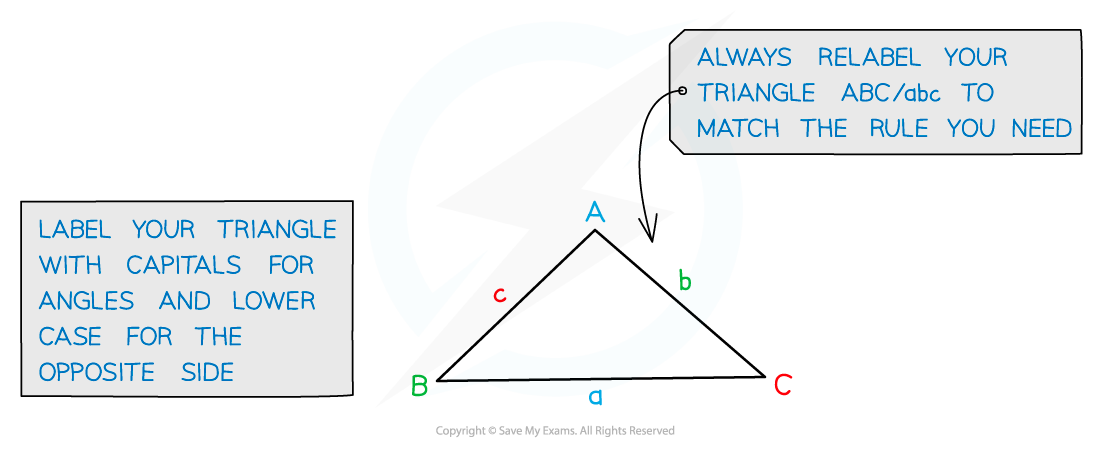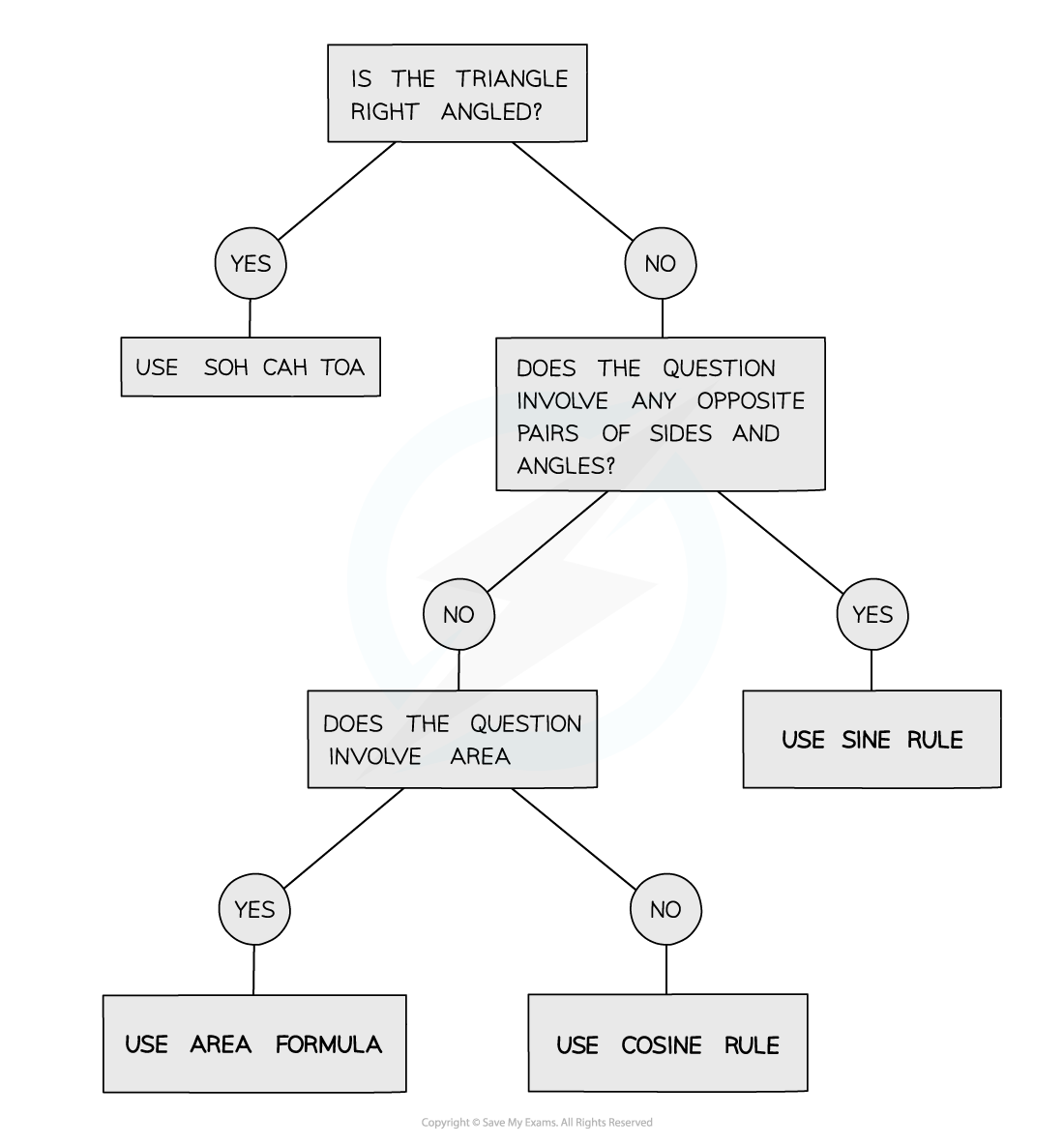Non Right-Angled Trigonometry (DP IB Analysis & Approaches (AA)) : Revision Note
Did this video help you?
Sine Rule
What is the sine rule?
The sine rule allows us to find missing side lengths or angles in non-right-angled triangles
It states that for any triangle with angles A, B and C
Where
a is the side opposite angle A
b is the side opposite angle B
c is the side opposite angle C
This formula is in the formula booklet, you do not need to remember it
Sin 90° = 1 so if one of the angles is 90° this becomes SOH from SOHCAHTOA

How can we use the sine rule to find missing side lengths or angles?
The sine rule can be used when you have any opposite pairs of sides and angles
Always start by labelling your triangle with the angles and sides
Remember the sides with the lower-case letters are opposite the angles with the equivalent upper-case letters
Use the formula in the formula booklet to find the length of a side
To find a missing angle you can rearrange the formula and use the form
This is not in the formula booklet but can easily be found by rearranging the one given
Substitute the values you have into the formula and solve
Examiner Tips and Tricks
If you're using a calculator make sure that it is in the correct mode (degrees/radians)
Remember to give your answers as exact values if you are asked too
Worked Example
The following diagram shows triangle ABC. ,
,
.

Use the sine rule to calculate the value of:
i) ,

ii) .

Did this video help you?
Ambiguous Sine Rule
What is the ambiguous case of the sine rule?
If the sine rule is used in a triangle given two sides and an angle which is not the angle between them there may be more than one possible triangle which could be drawn
The side opposite the given angle could be in two possible positions
This will create two possible values for each of the missing angles and two possible lengths for the missing side
The two angles found opposite the given side (not the ambiguous side) will add up to 180°
In IB the question will usually tell you whether the angle you are looking for is acute or obtuse
The sine rule will always give you the acute option but you can subtract from 180° to find the obtuse angle
Sometimes the obtuse angle will not be valid
It could cause the sum of the three interior angles of the triangle to exceed 180°

Examiner Tips and Tricks
Make sure that you are clear which of the two answers is the one that is required and make sure that you communicate this clearly to the examiner by writing it on the answer line!
Worked Example
Given triangle ,
,
,
. Find the two possible options for
, giving both answers to 1 decimal place.

Did this video help you?
Cosine Rule
What is the cosine rule?
The cosine rule allows us to find missing side lengths or angles in non-right-angled triangles
It states that for any triangle
;
Where
c is the side opposite angle C
a and b are the other two sides
Both of these formulae are in the formula booklet, you do not need to remember them
The first version is used to find a missing side
The second version is a rearrangement of this and can be used to find a missing angle
Cos 90° = 0 so if C = 90° this becomes Pythagoras’ Theorem
How can we use the cosine rule to find missing side lengths or angles?
The cosine rule can be used when you have two sides and the angle between them or all three sides
Always start by labelling your triangle with the angles and sides
Remember the sides with the lower-case letters are opposite the angles with the equivalent upper-case letters
As the formula uses
for the known angle, or the angle being found, you can choose to relabel the diagram to match this
Remember to also relabel the sides, so that side
is opposite angle
, and so on
Use the formula
to find an unknown side
Use the formula
to find an unknown angle
C is the angle between sides a and b
Substitute the values you have into the formula and solve
Examiner Tips and Tricks
If you're using a calculator make sure that it is in the correct mode (degrees/radians)
Remember to give your answers as exact values if you are asked too
Worked Example
The following diagram shows triangle .
,
,
.

Calculate the value of .

Did this video help you?
Area of a Triangle
How do I find the area of a non-right triangle?
The area of any triangle can be found using the formula
Where C is the angle between sides a and b
This formula is in the formula booklet, you do not need to remember it
Be careful to label your triangle correctly so that C is always the angle between the two sides
Sin 90° = 1 so if C = 90° this becomes Area = ½ × base × height

Examiner Tips and Tricks
If you're using a calculator make sure that it is in the correct mode (degrees/radians)
Remember to give your answers as exact values if you are asked too
Worked Example
The following diagram shows triangle .
,
,
.

Calculate the area of triangle .


You've read 0 of your 5 free revision notes this week
Unlock more, it's free!
Did this page help you?
